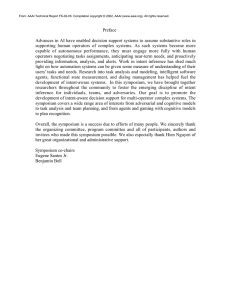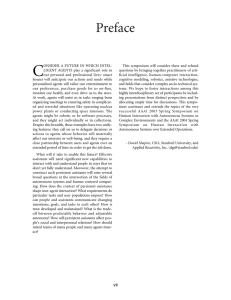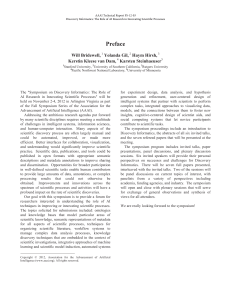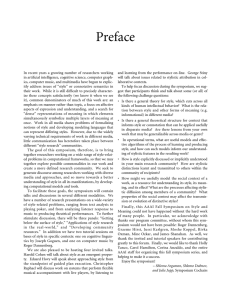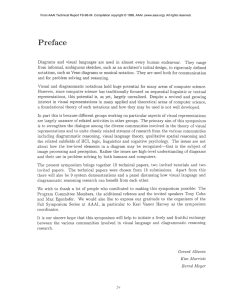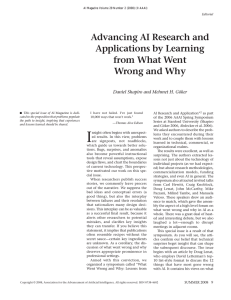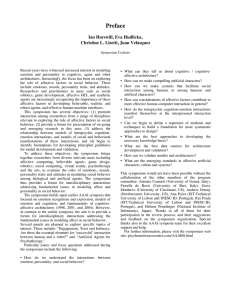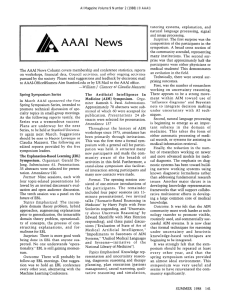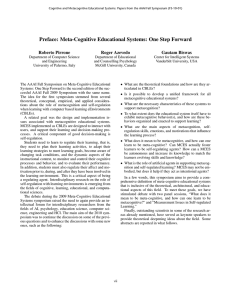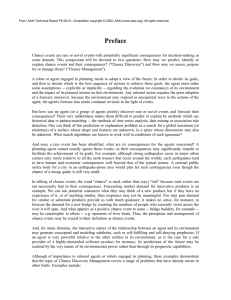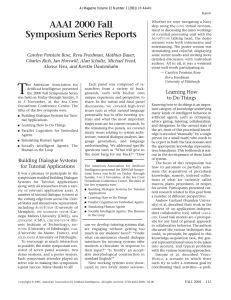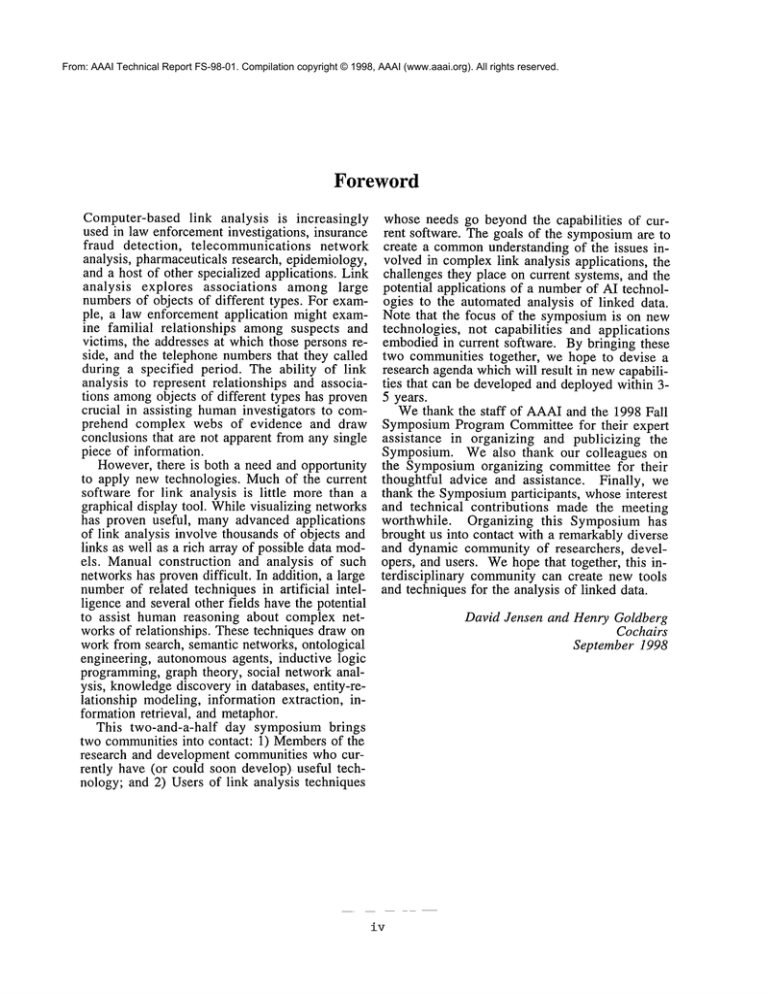
From: AAAI Technical Report FS-98-01. Compilation copyright © 1998, AAAI (www.aaai.org). All rights reserved.
Foreword
Computer-based link analysis is increasingly
used in law enforcement investigations, insurance
fraud detection, telecommunications network
analysis, pharmaceuticals research, epidemiology,
and a host of other specialized applications. Link
analysis explores associations
among large
numbersof objects of different types. For example, a law enforcement application might examine familial relationships among suspects and
victims, the addresses at which those persons reside, and the telephone numbersthat they called
during a specified period. The ability of link
analysis to represent relationships and associations amongobjects of different types has proven
crucial in assisting humaninvestigators to comprehend complex webs of evidence and draw
conclusions that are not apparent from any single
piece of information.
However,there is both a need and opportunity
to apply new technologies. Muchof the current
software for link analysis is little more than a
graphical display tool. Whilevisualizing networks
has proven useful, many advanced applications
of link analysis involve thousands of objects and
links as well as a rich array of possible data models. Manual construction and analysis of such
networkshas proven difficult. In addition, a large
numberof related techniques in artificial intelligence and several other fields have the potential
to assist human reasoning about complex networks of relationships. These techniques draw on
work from search, semantic networks, ontological
engineering, autonomousagents, inductive logic
programming, graph theory, social network analysis, knowledgediscovery in databases, entity-relationship modeling, information extraction, information retrieval, and metaphor.
This two-and-a-half day symposium brings
two communities into contact: 1) Membersof the
research and development communities who currently have (or could soon develop)useful technology; and 2) Users of link analysis techniques
whose needs go beyond the capabilities of current software. The goals of the symposiumare to
create a commonunderstanding of the issues involved in complexlink analysis applications, the
challenges they place on current systems, and the
potential applications of a numberof AI technologies to the automated analysis of linked data.
Note that the focus of the symposiumis on new
technologies, not capabilities and applications
embodied in current software. By bringing these
two communities together, we hope to devise a
research agenda whichwill result in newcapabilities that can be developed and deployed within 35 years.
Wethank the staff of AAAIand the 1998 Fall
Symposium Program Committee for their expert
assistance in organizing and publicizing the
Symposium. We also thank our colleagues on
the Symposiumorganizing committee for their
thoughtful advice and assistance. Finally, we
thank the Symposium
participants, whose interest
and technical contributions made the meeting
worthwhile. Organizing this Symposium has
brought us into contact with a remarkably diverse
and dynamic community of researchers, developers, and users. Wehope that together, this interdisciplinary communitycan create new tools
and techniques for the analysis of linked data.
David Jensen and Henry Goldberg
Cochairs
September 1998

